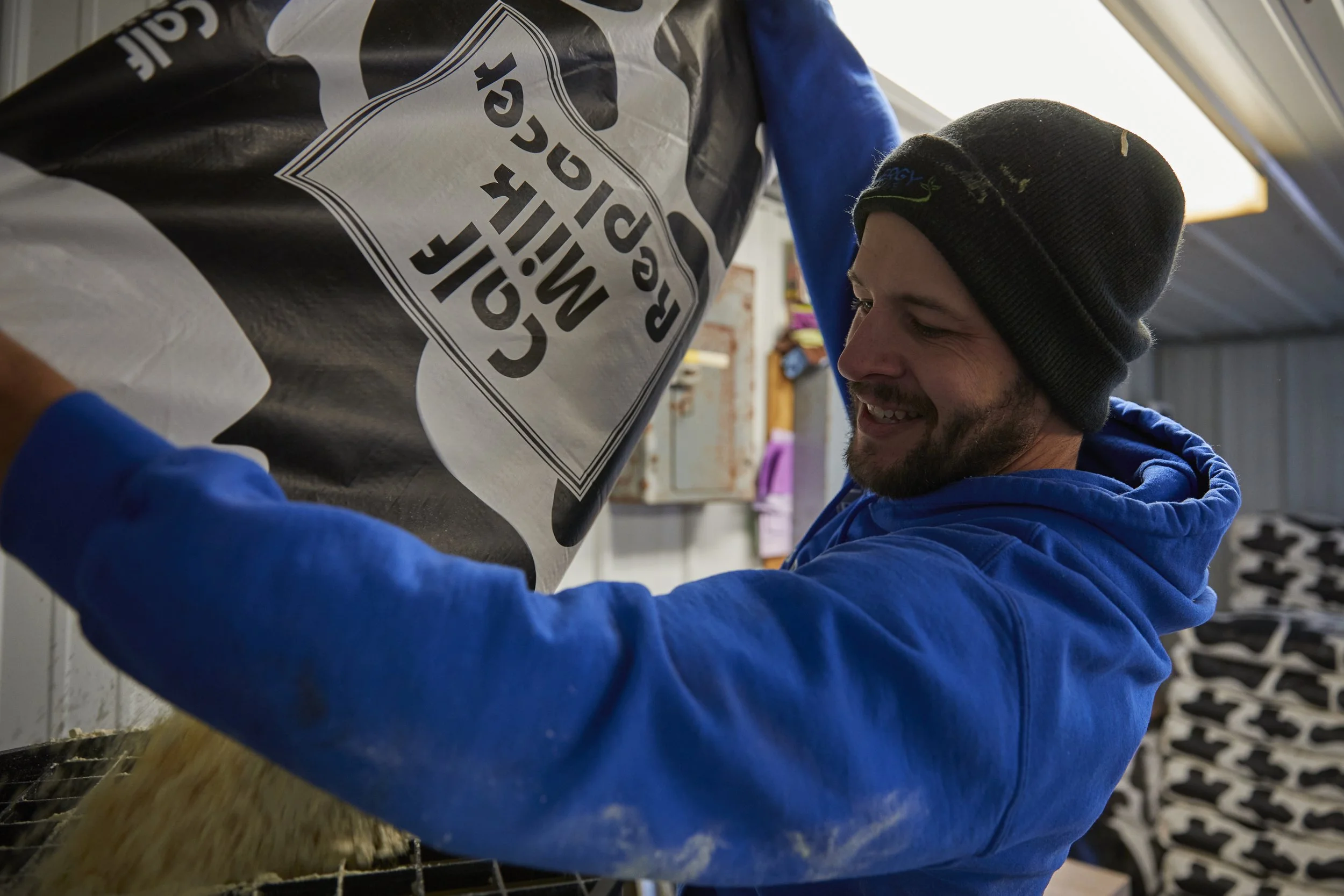Maximizing Autofeeders: What We’ve Learned
Automated calf feeders have now been commercially available in the United States for roughly two decades. By design, autofeeders can be an excellent tool, as they allow calf-feeding patterns that most closely mimic those of a nursing calf in nature (Mother Nature’s way). When managed correctly, they can be utilized to grow big, healthy calves that transition well at weaning.
The keys to success with autofeeders include:
Facility design – Calf pens need to be well-ventilated, allow for at least 40 square feet of resting space per calf, and limited to no more than 16 calves per nipple. Some of the most unfortunate results from autofeeders that I have observed have been in barns that are either poorly ventilated, overcrowded, or both. Pen layout should also make it easy for human caretakers to visually observe calves and clean pens regularly. The easier it is to perform a task, the more frequently it will get done.
In my experience, it is not absolutely necessary to build autofeeder barns from scratch. Successfully retrofitting existing structures is possible if these facility design principles are followed. Specifically, regarding ventilation, the best retrofits I have seen always incorporate at least some natural ventilation with upper ridge-roof vents and/or central chimneys to encourage regular air exchange.
“Unfortunately, when autofeeders are incorporated into poor facilities or are not managed correctly, they can actually make things worse for calves.”
Calf comfort – Naturally ventilated autofeeder barns are not heated, so calves need the same type of cold protection in the winter as those in outdoor hutches. Calf jackets and deep straw bedding are “musts” in cold weather, while shavings or straw can be used in the warmer seasons. Regardless of the season, pens should be fully cleaned out and re-bedded at least once per week.
Machine maintenance – “Automatic” does not mean “autopilot” when it comes to autofeeders. The most successful autofeeder managers take the time to learn and follow the recommendations and instructions from the manufacturer. That means following prescribed cleaning and sanitation protocols every day, changing nipples on a regular basis, checking and replacing hoses, etc.
Machine monitoring – One thing that amazes me is the number of operations that don’t take the time to learn about all the features that these autofeeder systems offer. In addition to simply programming the concentration, amount, and frequency of milk replacer that calves can drink, autofeeders collect an enormous amount of data that can be used to optimize gains and detect early signs of a calf becoming ill. As an example, one of the features that can help managers detect disease early is drinking speed. Most autofeeder systems will record drinking speed on an individual-calf basis, and changes in drinking speed (usually slower) can indicate that a calf is becoming sick.
Another great feature of autofeeders is the ability to wean calves easily and gradually by dialing back feedings over time in a manner that is not practical in individual-calf systems. Socially fed calves, like those fed with an autofeeder, also transition better through the weaning process because they do not endure the stress of commingling immediately after weaning.
When these fundamentals are addressed, autofeeders offer some distinct advantages compared to individual housing that can produce amazingly healthy and productive calves.
A farmer adding milk replacer to an autofeeder.
Unfortunately, when autofeeders are incorporated into poor facilities or are not managed correctly, they can actually make things worse for calves. As an example, let’s take a calf that is in the process of getting sick. In a hutch or individual pen, the person feeding the calf will see her at least twice a day, immediately know if she is eating well or not, and can easily detect scours or loose manure. That same calf in a group-housed situation will need someone to find out she is sick. This takes a person with a good eye to spot the calf in the pen, look over her performance from the autofeeder data, and then personally evaluate her to determine if she is sick.
Another problem I see a lot of is the overstocking of pens, which leads to respiratory problems and/or cross-sucking that ultimately ends up having a negative effect on animal performance as lactating cows. Like in a kindergarten class, if one calf gets sick, they all get sick.
Group-housed calves also tend to be more prone to disease than individually-raised calves, as they are all breathing the same air and touching the same equipment and each other. This takes additional management to monitor and treat calves.
In short, if you dislike raising calves or are not willing and able to invest in the facilities, management, and labor to optimize the return on investment of autofeeders, then don’t do it. Stick with keeping it simple. Autofeeders are definitely not the “easy way,” and require a higher level of management than traditional bottle or pail feeding. Don't expect autofeeders to save much in the way of labor costs, either. While they require fewer total people-hours to manage, the level of management is higher, which usually comes at a higher per-person cost.
Autofeeders are not for everybody, but with the right management mindset and effort, calves can certainly thrive on autofeeders. When used incorrectly, they can be a costly mistake.




Automated calf feeders have now been commercially available in the United States for roughly two decades. By design, autofeeders can be an excellent tool, as they allow calf-feeding patterns that most closely mimic those of a nursing calf in nature (Mother Nature’s way).